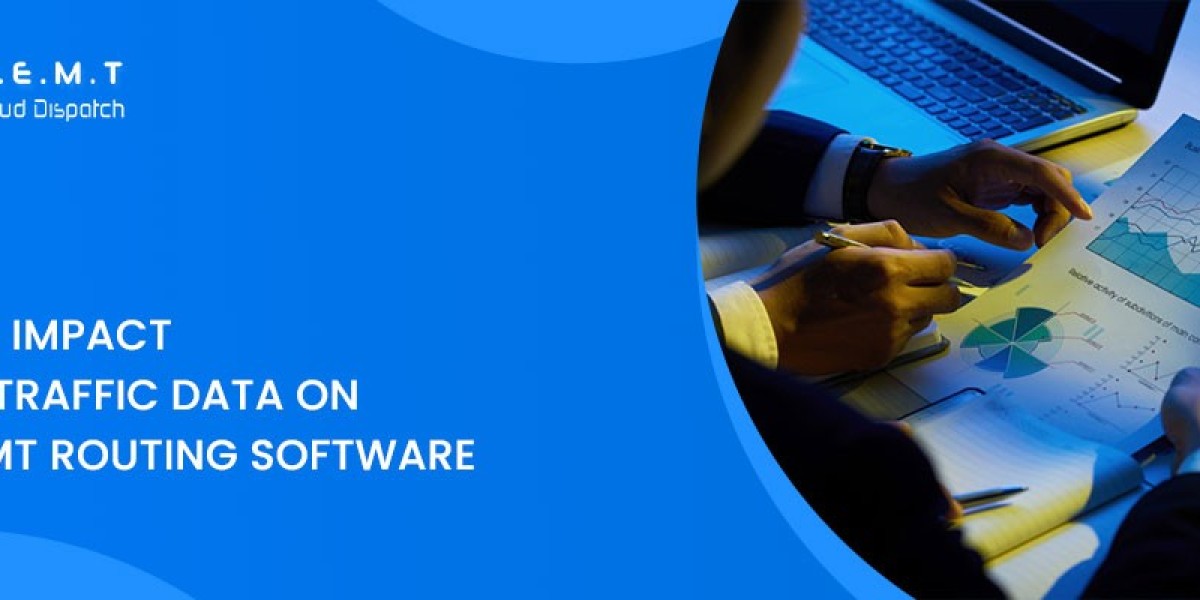Navigating through traffic is a challenge that every transportation service faces, and it's no different for Non-Emergency Medical Transportation (NEMT) providers. When it comes to getting patients to their medical appointments on time, efficient routing is key. Traffic data plays a significant role in making this possible, and its integration into NEMT routing software has revolutionized the industry.
In this article, we'll explore how traffic data impacts NEMT routing software, the benefits it brings, and how companies like NEMT Cloud Dispatch are leveraging this data to provide better services. Let's dive in!
Understanding NEMT Routing Software
What is NEMT?
NEMT stands for Non-Emergency Medical Transportation, a vital service that helps individuals who are unable to drive or access public transport reach their medical appointments. It’s an essential part of healthcare, ensuring that patients, especially those with chronic illnesses, disabilities, or low income, can access necessary medical services.
How Does NEMT Routing Software Work?
NEMT Routing Software is designed to plan, schedule, and dispatch vehicles for non-emergency medical trips. This type of software helps streamline operations, ensuring that drivers are on time, routes are optimized, and patients reach their destinations safely.
Key Features of NEMT Routing Software
- Automated Scheduling: Automatically assigns the best route based on location and time.
- Real-Time GPS Tracking: Monitors vehicle movement to ensure timely arrivals.
- Traffic Data Integration: Uses real-time traffic information to adjust routes.
Why Traffic Data is Crucial for NEMT Routing
Real-Time Traffic Updates
In cities where traffic congestion is common, having access to real-time traffic updates is a game changer for NEMT providers. Traffic can cause delays, making it difficult for patients to reach appointments on time, which can lead to missed treatments. By incorporating real-time traffic data, NEMT routing software can adjust routes in real-time, avoiding high-traffic areas and saving valuable time.
Predictive Traffic Analysis
Beyond real-time data, some advanced routing software can predict future traffic patterns based on historical data. This predictive capability allows NEMT providers to plan routes with more accuracy, especially during rush hours or major events, ensuring timely arrivals.
Managing Delays and Efficiency
Traffic is unpredictable, but with the right data, delays can be minimized. NEMT routing software that integrates traffic data helps in better route planning and efficiency, reducing patient wait times and improving the overall service quality.
Benefits of Integrating Traffic Data in NEMT Routing
Improved On-Time Performance
One of the biggest advantages of traffic data is improving on-time performance. The ability to reroute in real-time ensures that NEMT vehicles reach their destinations without unnecessary delays.
Enhanced Patient Experience
When patients rely on NEMT services, they expect reliability. Late arrivals can be frustrating and cause missed medical treatments. By leveraging traffic data, NEMT services become more dependable, enhancing the patient experience.
Cost-Effective Operations
Integrating traffic data not only saves time but also reduces fuel costs. Shorter routes and less time spent idling in traffic mean significant savings for NEMT providers. The software ensures that drivers follow the most efficient routes, reducing operational costs.
How NEMT Cloud Dispatch Optimizes Routing
NEMT Cloud Dispatch takes traffic data utilization to the next level. By integrating advanced traffic data analytics into their non-emergency medical transportation routing software, they ensure optimized routes that consider both real-time and predictive traffic trends.
Real-World Application of Traffic Data
With NEMT Cloud Dispatch, dispatchers can monitor traffic conditions in real time and adjust routes accordingly, ensuring that patients are picked up and dropped off without delays.
Minimizing Fuel Costs
Fuel efficiency is a critical concern for NEMT providers. By minimizing the distance traveled and avoiding high-traffic zones, NEMT Cloud Dispatch helps reduce fuel consumption.
Reducing Driver Fatigue
Long hours in traffic can take a toll on drivers. By providing optimized routes, NEMT Cloud Dispatch ensures drivers spend less time in traffic, reducing fatigue and improving their overall job satisfaction.
The Role of Non-Emergency Medical Transportation (NEMT) in Healthcare
Bridging the Gap Between Healthcare Providers and Patients
NEMT plays a vital role in ensuring that patients can attend medical appointments, especially those who live in underserved areas or have limited mobility.
Increasing Access to Medical Appointments
Without NEMT services, many patients would miss important medical appointments, which could lead to worsened health conditions. NEMT ensures these individuals receive timely medical care.
Challenges Faced by NEMT Providers
Unpredictable Traffic Conditions
Despite having the best routing software, traffic remains one of the biggest challenges for NEMT providers. Accidents, road construction, and unpredictable delays can cause significant disruptions.
Last-Minute Route Changes
Patient cancellations or new trip requests can lead to last-minute route changes, requiring the routing software to be flexible and adaptive.
Efficient Dispatching and Scheduling
Efficient dispatching requires quick decisions and real-time information. Without traffic data, dispatching can become inefficient, leading to longer wait times for patients.
How Dispatch Routing Software Can Address These Challenges
Automating Route Planning
Modern dispatch routing software can automate the entire route planning process, taking into account traffic conditions, vehicle capacity, and patient locations.
Real-Time Adjustments
The ability to make real-time adjustments ensures that routes are continuously optimized for efficiency, helping drivers avoid traffic and arrive on time.
Adapting to Sudden Changes
In the NEMT world, sudden changes are inevitable. Dispatch routing software that uses traffic data can quickly adapt to new conditions, providing the flexibility needed for a smooth operation.
Future Trends in NEMT Routing Software
AI-Powered Traffic Predictions
Artificial intelligence (AI) is being integrated into routing software to predict traffic patterns more accurately, allowing NEMT providers to stay ahead of delays.
Integration with Autonomous Vehicles
The future may see NEMT providers using autonomous vehicles, further revolutionizing the way routes are planned and executed.
The Importance of Reliable Dispatch Routing Software for NEMT Providers
Enhancing Customer Satisfaction
Reliable Route Dispatch Software ensures that patients arrive at their appointments on time, increasing satisfaction and trust in NEMT services.
Ensuring Regulatory Compliance
NEMT providers must comply with various regulations, and having reliable dispatch routing software helps ensure they meet all legal requirements, including timeliness and safety standards.
Conclusion: The Growing Importance of Traffic Data in NEMT Routing
As traffic conditions become more unpredictable, integrating traffic data into NEMT routing software is essential for providing efficient, reliable service. Whether it's real-time updates or predictive traffic analysis, the benefits of traffic data are undeniable. Companies like NEMT Cloud Dispatch are leading the way in optimizing NEMT services, making sure that patients get to their appointments on time while keeping operational costs down.









